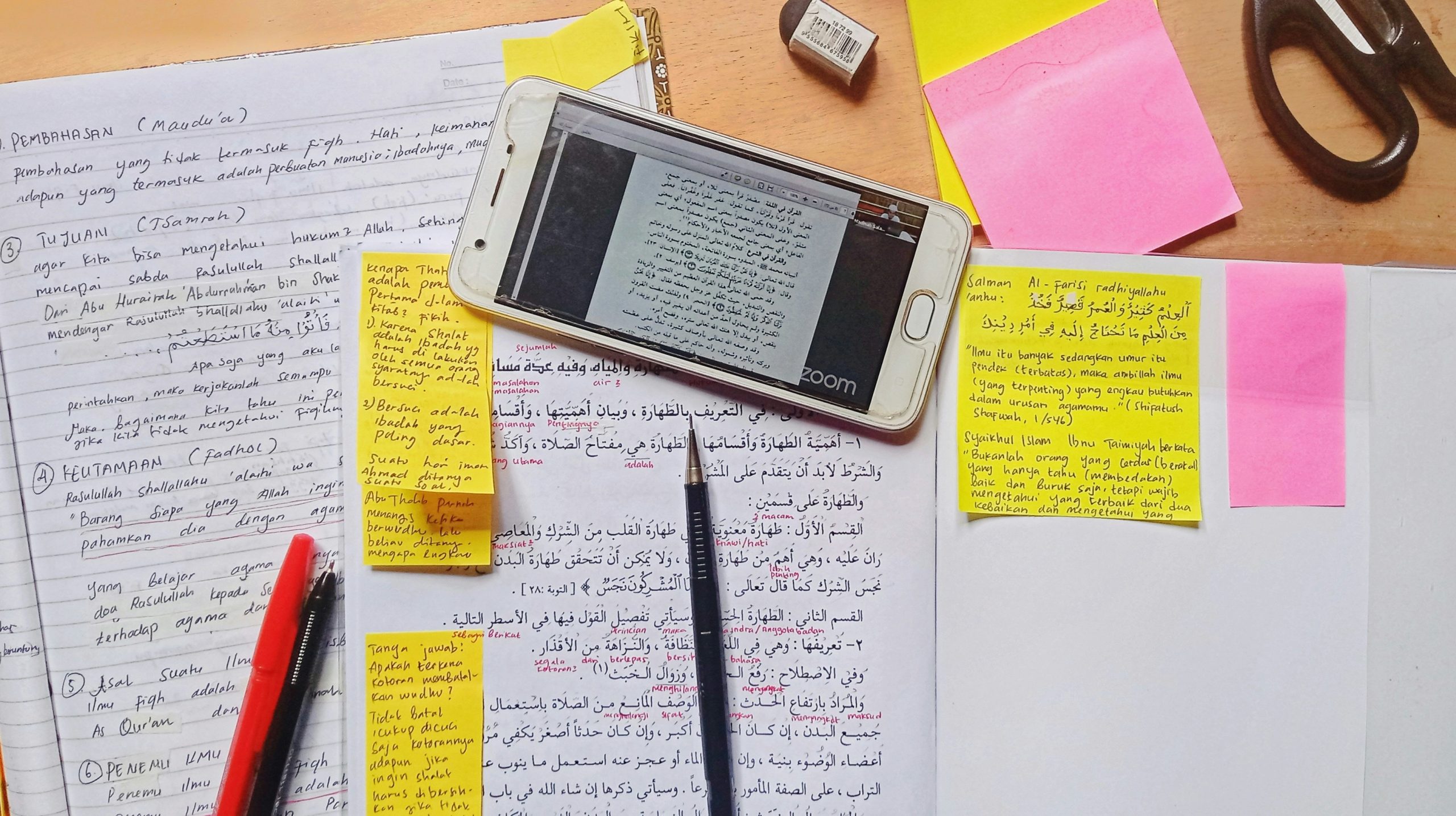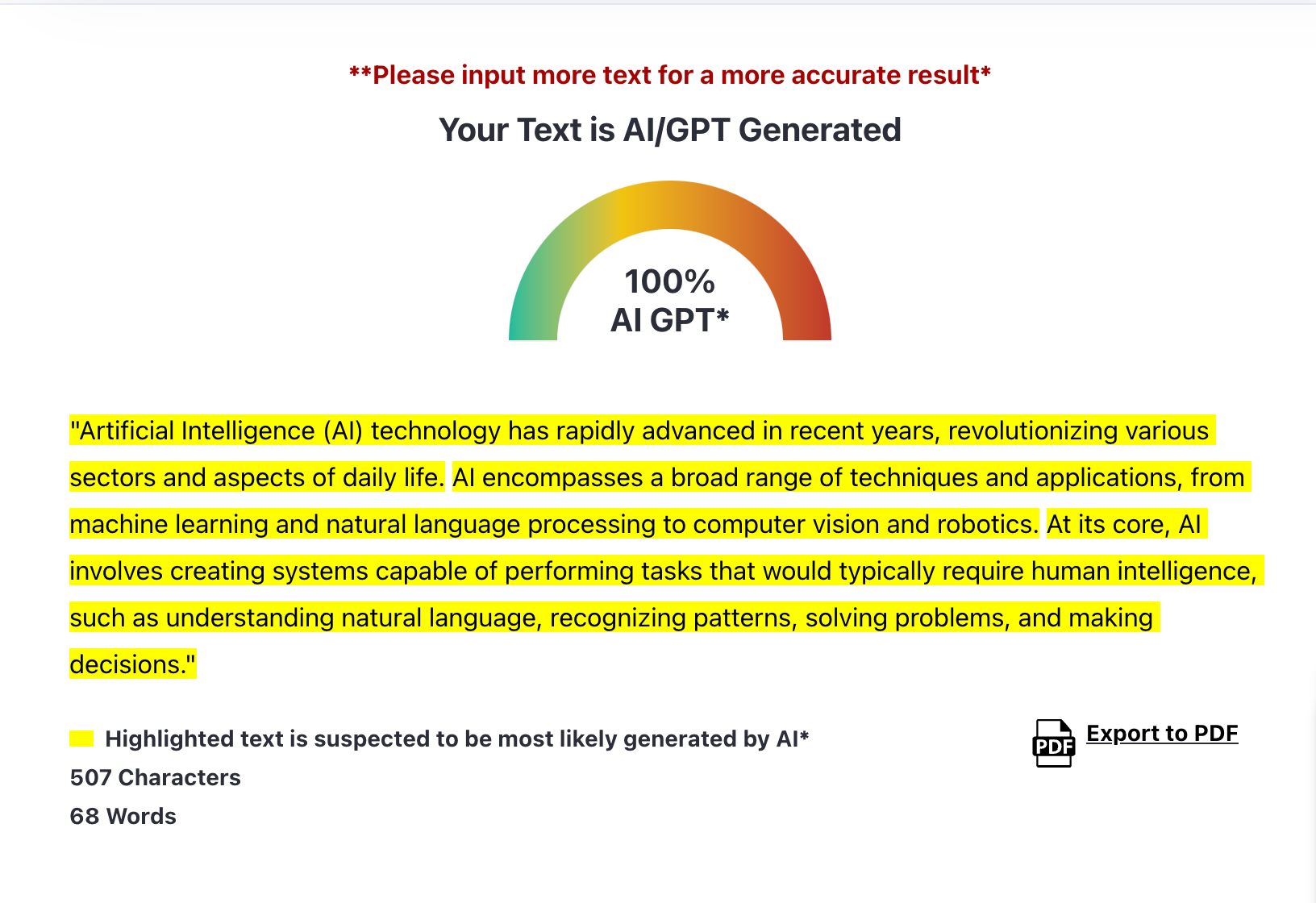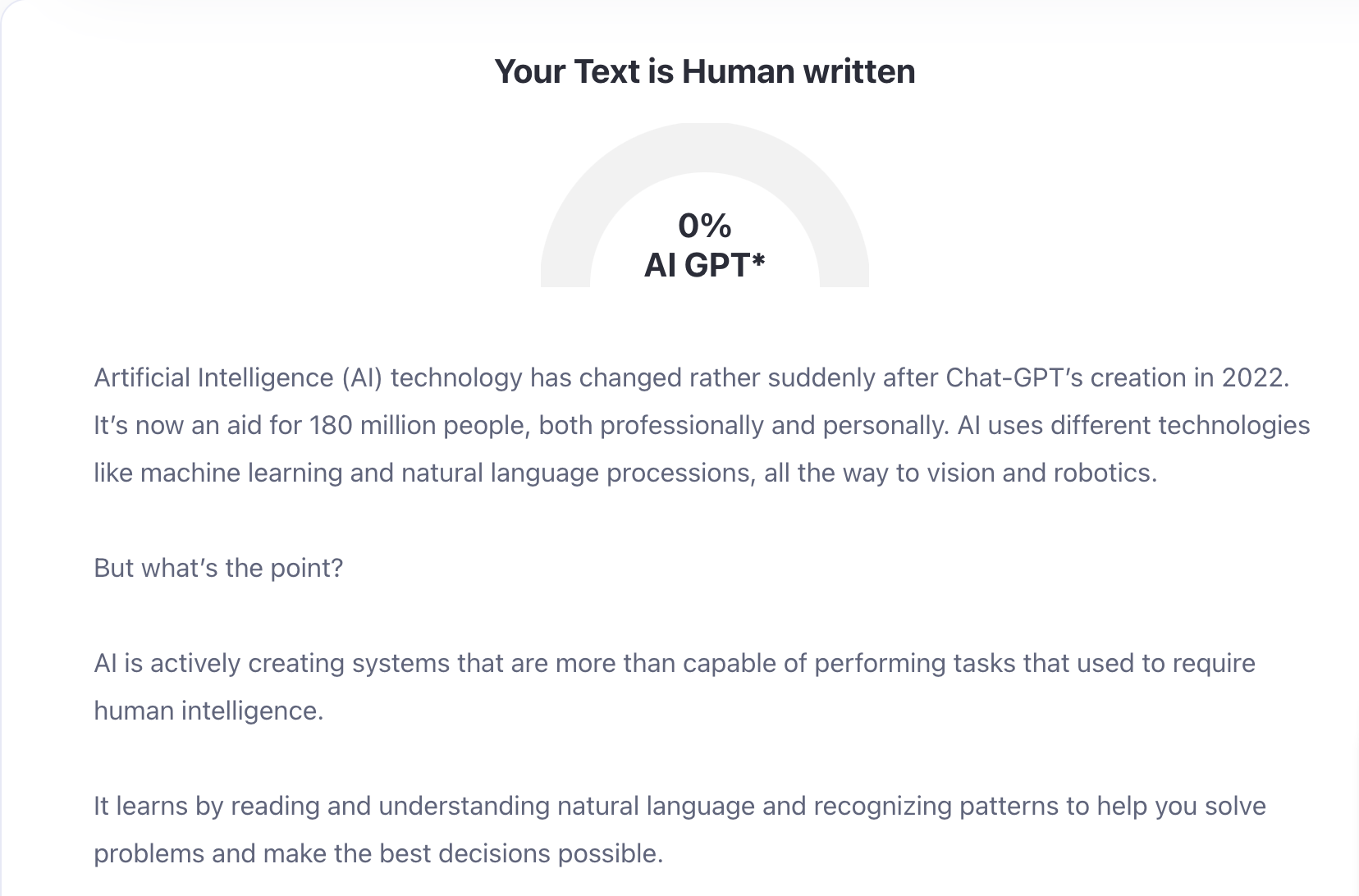As of March 2024, ChatGPT had 180.5 million users. That’s more than the population of the UK and Germany combined! With such widespread usage, schools and universities are paying attention to AI-generated content. While less than 10% of them currently have AI policies in place, according to a UNESCO survey, this is sure to change in the future.
So, let’s get down to the question: “Can my professors spot AI-generated text?”
The short answer to this is yes. With hundreds of AI detection software tools readily available on Google, they can likely spot when work isn’t your own.
Let’s take a deeper look at how professors can detect ChatGPT. We’ll also cover what you can do to avoid your academic integrity being questioned.

Jul 9, 2024 • 6 min read
How Does AI Detection Software Work?
AI detection software works by detecting plagiarism and AI language. It looks for telltale signs that an essay or paper was written by an AI rather than a human. Scanning the text will look for generic language use and sentence structures. Things that it will look out for include:
- Repetitive phrases
- Unnatural transitions
- Overly technical language that doesn’t fit
AI detection software is now evolving. Some tools can even recognize which AI models have generated the text, including ChatGPT. A lot of these models are free to use online, so professors can easily check student work.
What AI Detection Tools Do Professors Typically Use?
The AI detection tools used by your professor will depend on your university’s AI policy. Most will likely use the one provided by Turnitin (the plagiarism checker) called iThenticate. However, there have already been major issues with this AI detector tool. According to the Washington Post, innocent students are being penalized due to its inaccuracies.
If your teachers detect ChatGPT in your work, it could be a sign that your essay is too generic and sounds AI-written. Let’s look at how you can make your text sound more human to bypass your professor’s AI detection tool.
How To Make AI-Written Text Sound More Human
AI-written content sounds clunky and generic that makes it easy for the AI detectors to pick up and flag your work. To avoid this, focus on creating a smooth flow and natural tone in your sentences. Steer clear of robotic or monotonous phrasing. Enhance your writing by incorporating conversational elements, and adding humor can also help humanize the content.
While AI-language models copy human-written text and emulate tone and style, they often pick up generic writing styles. Here are just a few:
- Lists of three in a sentence
- Overly complicated and clunky words like “leverage” or “various”
- Complex sentence structures
- Repetitive language
- A lack of variation in language and sentence length
AI tools will look for all these patterns. They will then either give you an AI percentage or state whether it’s AI-written work or not.
To prevent your work from sounding like it was produced by an AI, make sure your language is varied. If you want to maintain your academic integrity, check you’re not repeating words and sentence structures.
Here’s an example of AI-written content and elements that will possibly get flagged:
“Artificial Intelligence (AI) technology has rapidly advanced in recent years, revolutionizing various sectors and aspects of daily life. AI encompasses a broad range of techniques and applications, from machine learning and natural language processing to computer vision and robotics. At its core, AI involves creating systems capable of performing tasks that would typically require human intelligence, such as understanding natural language, recognizing patterns, solving problems, and making decisions.”
If we input this into the AI checker ZeroGPT, the whole paragraph is flagged as AI text.

Here’s what’s wrong with this excerpt:
- It uses generic language like “various” and “encompasses.”
- The text has sentence structures that are far too complicated, like the “from, to.”
- It includes well-known phrases like “at its core.”
- It includes long lists that sound clunky.
- The paragraph itself is far too long.
From all these elements alone, it’s clear an AI tool (like ChatGPT or any of its alternatives) has written this excerpt. If your academic writing sounds similar to this, you should think about editing before submission.
Let’s turn this ChatGPT-generated content into human-like text.
Here’s the new example:
“Artificial Intelligence (AI) technology has changed rather suddenly after ChatGPT’s creation in 2022. It’s now an aid for 180 million people, both professionally and personally. AI uses different technologies like machine learning and natural language processions, all the way to vision and robotics.
But what’s the point?
AI is actively creating systems that are more than capable of performing tasks that used to require human intelligence.
It learns by reading and understanding natural language and recognizing patterns. This helps you solve problems and make the best decisions possible.”
If we input this into the AI content detector ZeroGPT, the text now registers as 0% AI.

Here’s what we did differently:
- Removed all generic language and replaced it with more specific words.
- Broke up the paragraph into smaller, more manageable chunks.
- Used a question within the text.
- Switched up the sentence structure.
- Addressed the reader.
If your teachers pass your work through AI content detection tools, you can stop them from penalizing your writing assignments by making your text sound less generic. Add your own flair while keeping to the brief set by your teacher. That way, you can relax knowing your work will be proven to be 100% your own.
Use Smodin’s AI Detector To Check Your Essays Now
Struggling with writer’s block? Not sure how to begin your essay? Let Smodin AI Chat guide you through the writing process. Ask questions, develop your ideas, and improve your content with ease. Once you’ve drafted your essay, use our rewriting or paraphrasing tools to refine it further.
Worried about AI detection in your academic work? Don’t take chances with your academic integrity. Check out the Smodin AI Content Detection Remover and transform your writing process! Our powerful AI tools help you craft high-quality, human-like content that passes AI detection with ease. With Smodin AI, you get:
- Effortless text generation tailored to your needs
- AI-powered research tools for comprehensive insights
- Automatic referencing in MLA and APA formats
- Detailed feedback to refine your writing
Stay ahead of AI detection and maintain your academic integrity. Sign up for Smodin AI and ensure your essays pass AI detection tools now!
FAQs
How accurate is AI detection software?
Most free tools that detect AI claim to be close to 100% accurate, but this unfortunately isn’t the case. Because AI is evolving constantly, tools can’t keep up. They’ll flag your human-written content, even if you’ve spent hours researching and writing. AI detection tools all use different methods for detecting content. Some are more accurate than others.
It’s likely that your professors will be aware of this and will give you some wiggle room. If you’re feeling overwhelmed, we recommend talking to your university about their policies and next steps.
Can universities detect ChatGPT code?
Yes, universities are more than capable of identifying AI model use in your coursework or dissertation. They’ll likely use AI detectors like Turnitin or Copyscape to determine an AI score. To maintain academic integrity, we recommend inputting your essay into an AI detector as part of the editing process. You should always do this, even if you haven’t included ChatGPT-generated content.
What will happen if my essays are flagged as AI?
What happens to you if your essays are flagged for ChatGPT-generated content depends on your college’s AI policy. Some may give you an automatic fail, while others might allow you to rewrite certain sections. If the university is especially strict, you may even face disciplinary action.
With AI content being fairly new, universities are reluctant to inflict serious punishment on students who submit AI-written work. Still, be careful. Check your school’s AI policy so you know what to expect.


 AI
Plagiarism Checker
AI
Plagiarism Checker
 AI
Content Detection Remover
AI
Content Detection Remover
